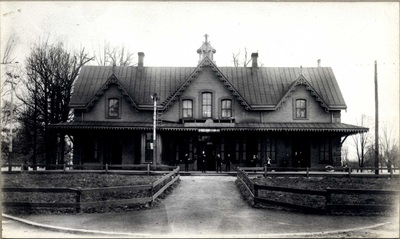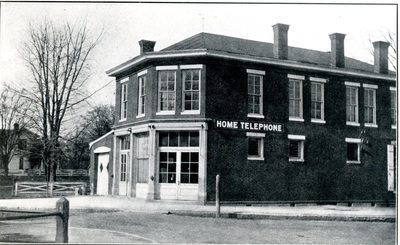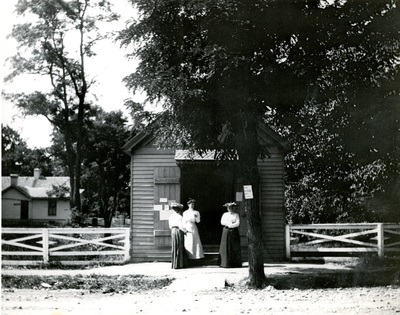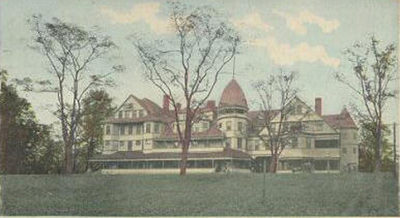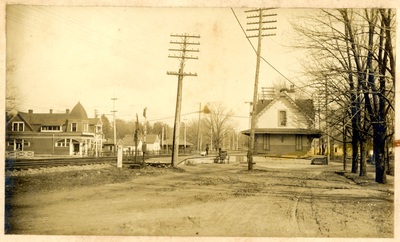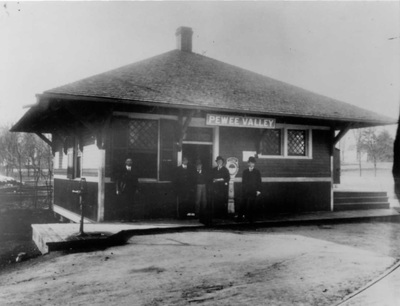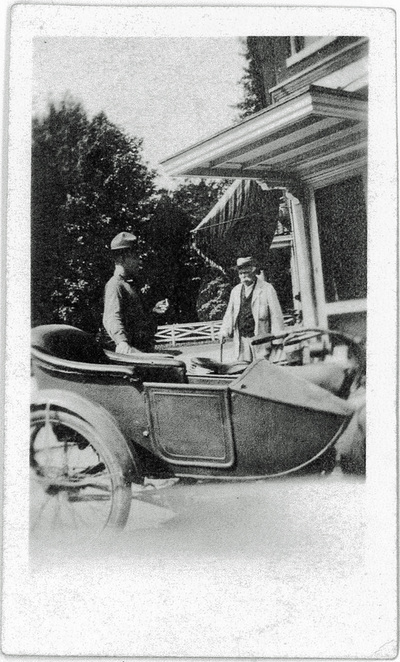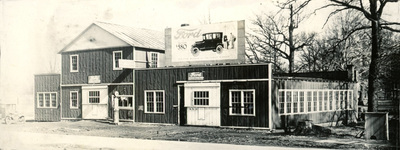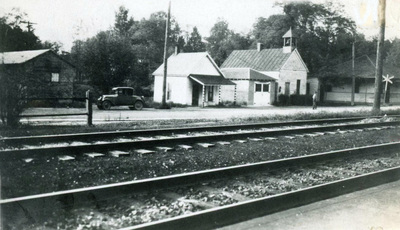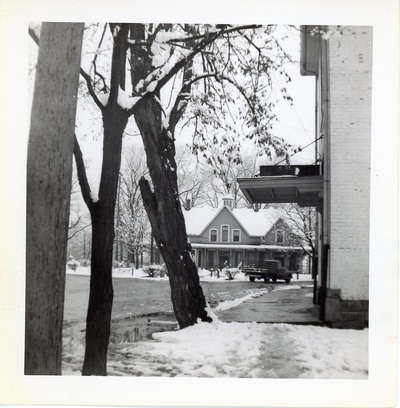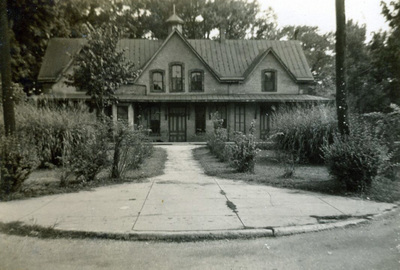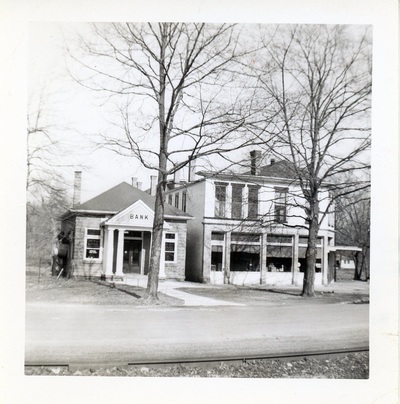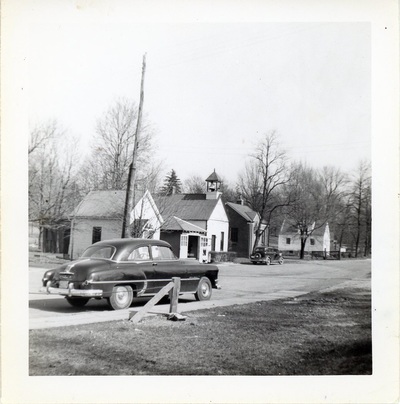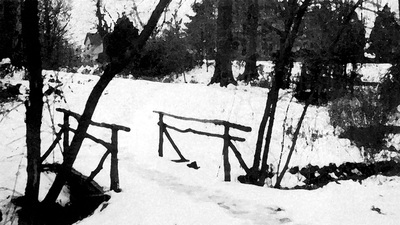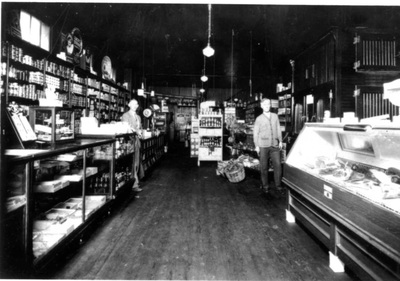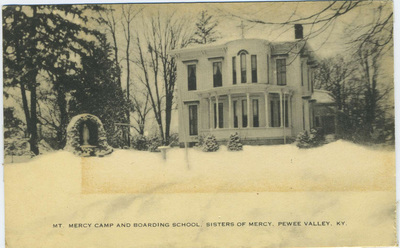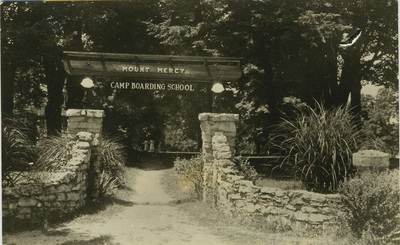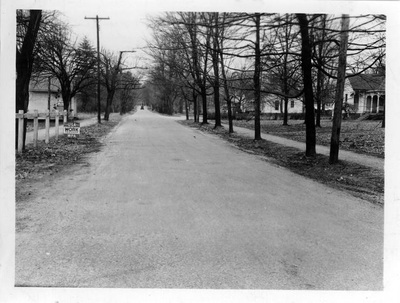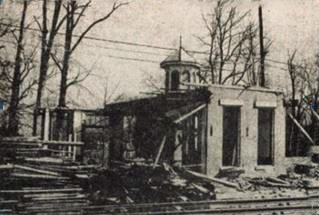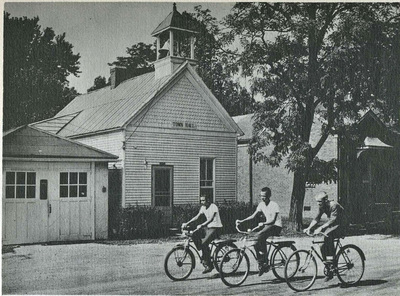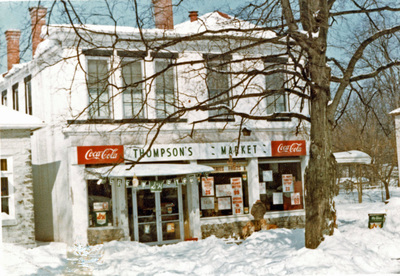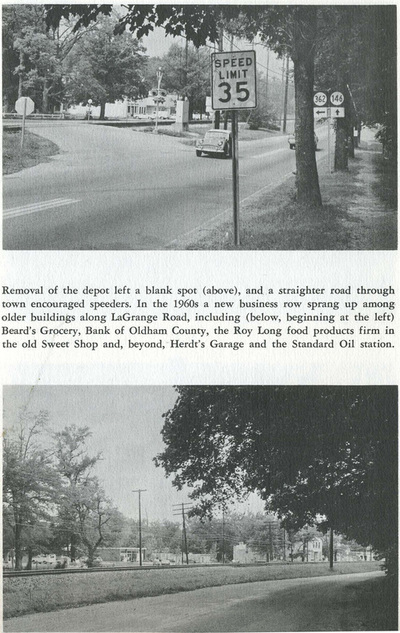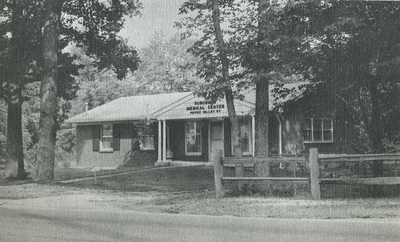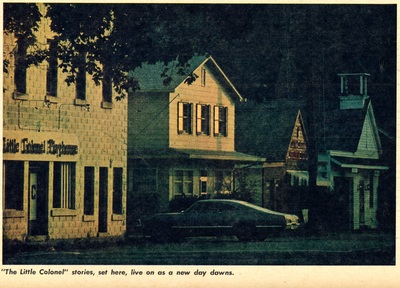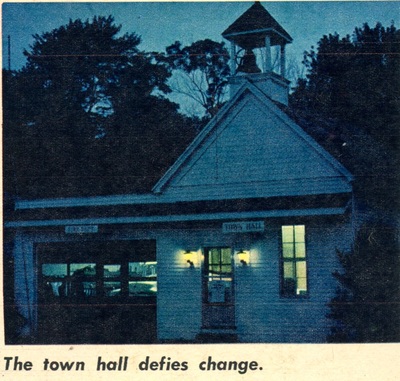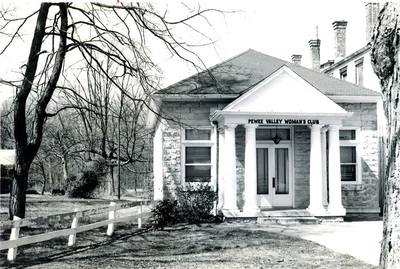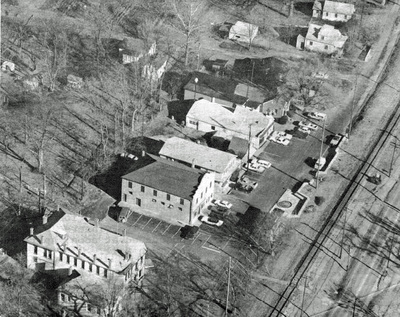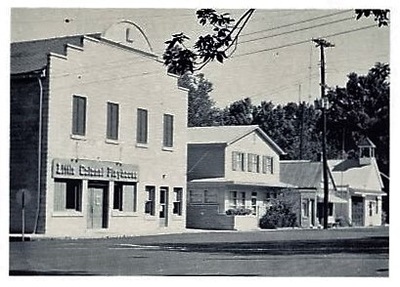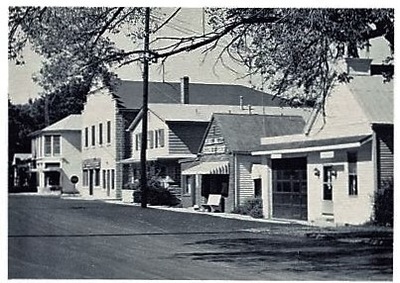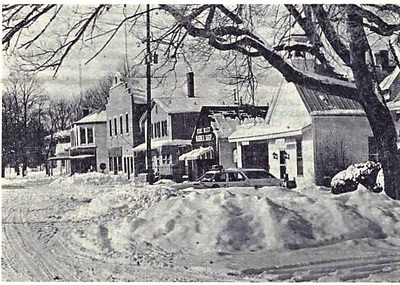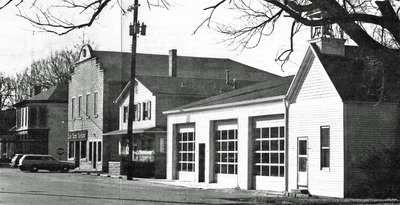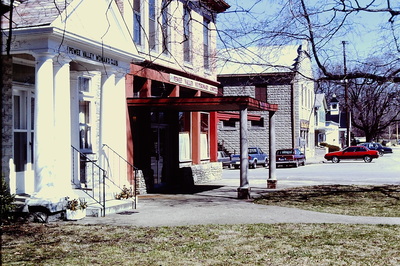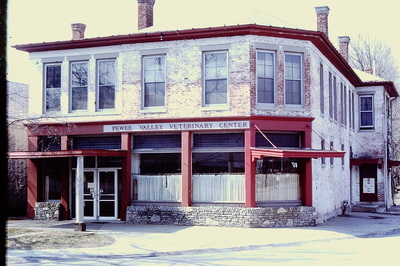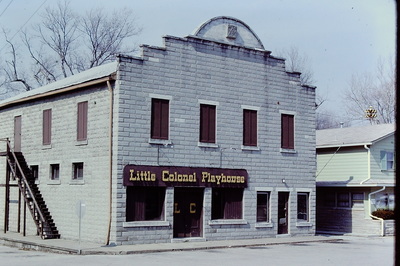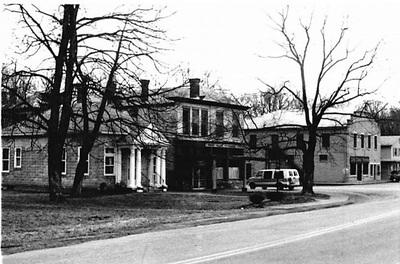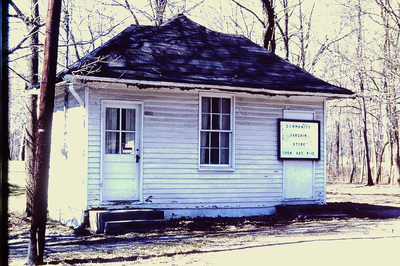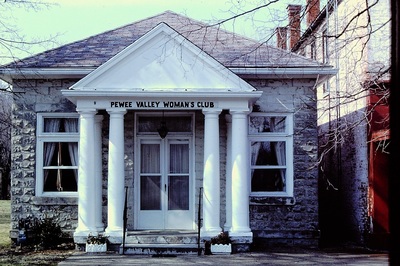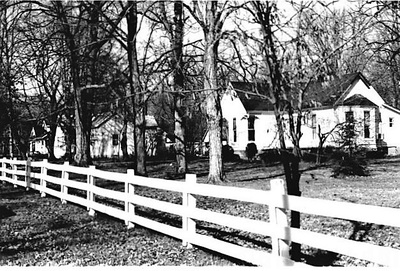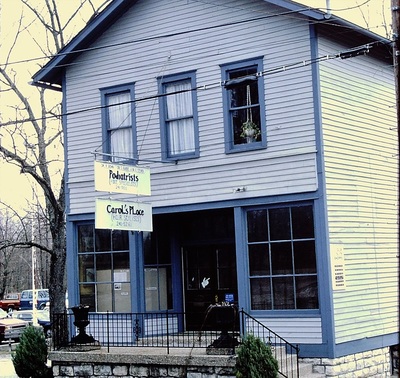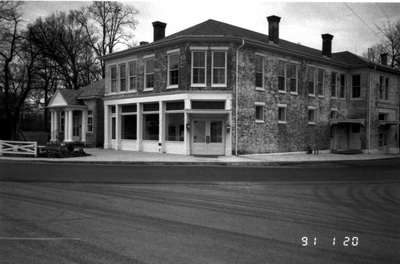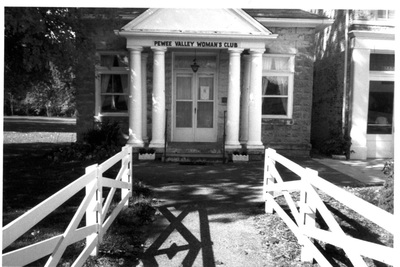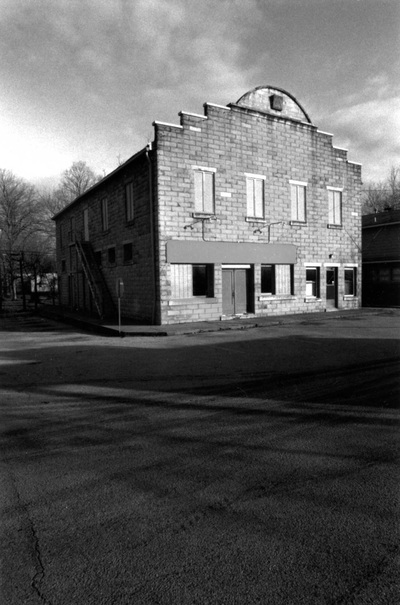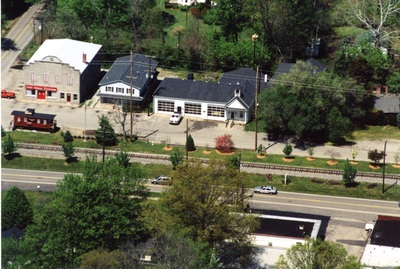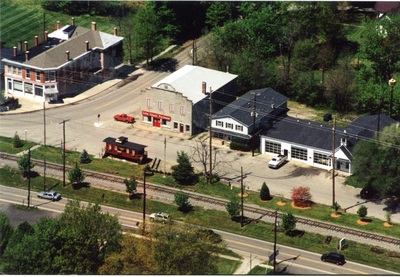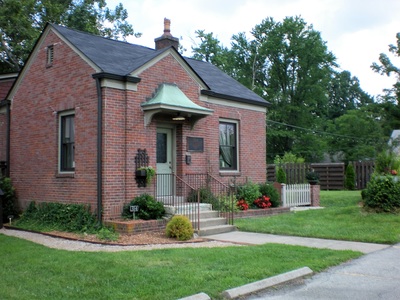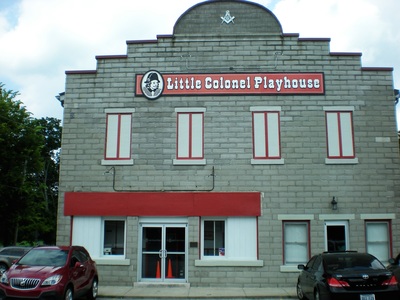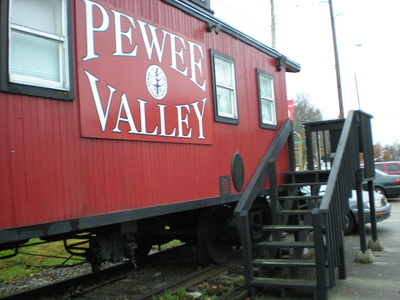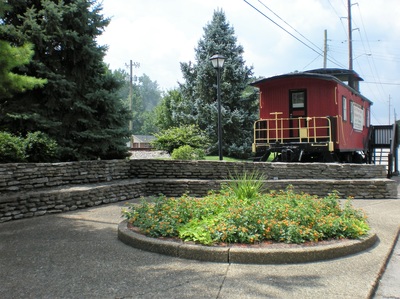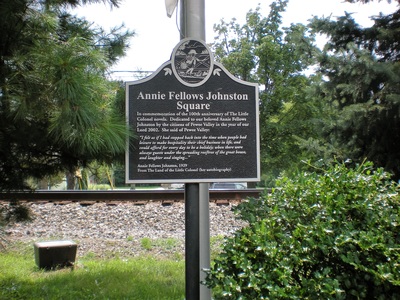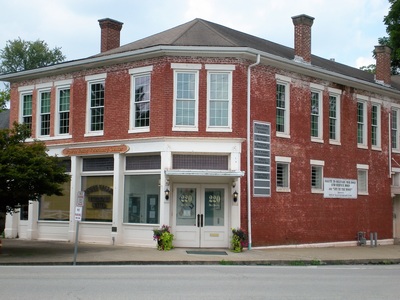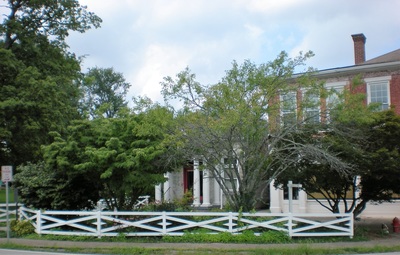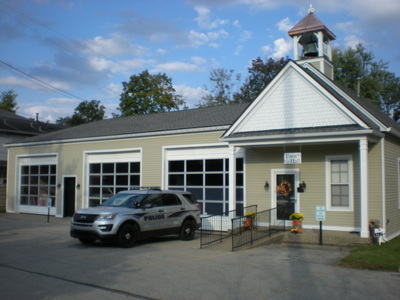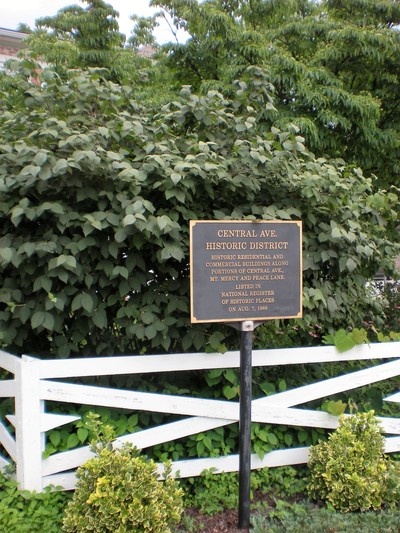About / Contact the Pewee Valley Historical Society
The Pewee Valley Historical Society's and Pewee Valley Museum's goal is to preserve
and share Pewee Valley, Ky.'s unique history.
and share Pewee Valley, Ky.'s unique history.
Downtown Pewee Valley at the Turn of the 20th Century
Since the first citizens came to Pewee Valley shortly after the Louisville & Frankfort Railroad laid track through what’s now the center of town, residents have cherished what their city has to offer: pastoral beauty and village-like charm within an easy commute of Louisville. Antiquates Peweeji, written in 1858, described the early settlers’ homes as “beautiful palaces which are the wonder of every passing traveler,” while poet and novelist Catherine Anne Warfield observed that, “…vines and blossoms of many a dye made gardens fit for a poet’s eye.” A half-century later, Pewee Valley photographer Kate Matthews would hire Abe Parker and his horse to drive her around while she picked up litter to keep the streets beautiful.
Throughout its history, whenever the city has needed improvement or its aesthete has been threatened, residents have taken up the cause. The first such recorded occurrence was in 1867, three years before Pewee Valley officially became a city. That was when private citizens Orville N. Truman, Rev. John L. McKee, Jonas H. Rhorer, Woodford H. Dulaney and Henry M. Woodruff built and paid for a new railroad station.
Throughout its history, whenever the city has needed improvement or its aesthete has been threatened, residents have taken up the cause. The first such recorded occurrence was in 1867, three years before Pewee Valley officially became a city. That was when private citizens Orville N. Truman, Rev. John L. McKee, Jonas H. Rhorer, Woodford H. Dulaney and Henry M. Woodruff built and paid for a new railroad station.
Downtown Pewee Valley in the 1930s & 1940s
In 1902, when the Sons of Confederate Veterans decided to purchase the abandoned Villa Ridge Inn and turn it into a retirement home for Confederate soldiers, Peweeans fought the project tooth and nail. They lost, but far from gracefully. According to Rusty Williams, author of My Old Confederate Home: A Respectable Place for Civil War Veterans, the Town Council’s president at that time, Henry M. Woodruff, “promised protest meetings of the town’s citizens.” Former Council President Judge Peter B. Muir used his considerable political clout to make “a personal appeal to Governor Beckham. Beckham, who was counting on ex-Confederate votes to return him to the statehouse, didn’t respond to Muir’s telegrams. When Muir threatened a lawsuit to overturn the legislation that established the Home, the state’s attorney general ruled in support of the act.”
Downtown Pewee Valley at the Century Mark: The 1960s & 1970s
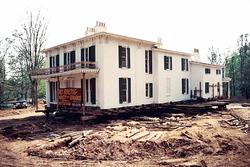 Edgewood on the move in 1988.
Edgewood on the move in 1988.
In 1987, when Edgewood, one of the town’s oldest and most famous homes, was threatened with the wrecking ball by developers, residents formed Historic Pewee Valley. Not only was Edgewood saved, but the group also successfully formed the city’s two National Register Historic Districts:
- The Ashwood Avenue Historic District;
- The Central Avenue Historic District.
Purpose
Today, the Pewee Valley Historical Society continues the important work of our forebears. Our goals are:
1. To preserve Pewee Valley’s history, including its many architectural and historic treasures;
2. To educate the community about Pewee Valley’s unique heritage through special events, speaking engagements, this website, the museum at Town Hall and other activities;
3. To raise funds for historical projects through Friends of Pewee Valley, a non-profit 501(c)3; and
4. To contribute Pewee Valley-related historical artifacts, documents, oral histories, digitized photographs and other images to the city’s museum at Town Hall and to the Oldham County Historical Society’s collection, thereby preserving them for posterity.
Downtown Pewee Valley in the 1980s and 1990s
Membership & Contact Information
Membership is open to anyone with an interest in Pewee Valley’s history. There are no dues. Meetings are generally held at Town Hall on an as-needed basis.
For information, contact:
Suzanne Schimpeler, President, [email protected]
For information, contact:
Suzanne Schimpeler, President, [email protected]
Photos
One of the Pewee Valley Historical Society’s goals is to collect photos of people and places in Pewee Valley: former residents, homes, local landmarks, funeral and church programs, receipts from local businesses, newspaper clippings, etc., so we can document how our town has changed through the years. We are happy to scan your originals and return them to you. We consider photos taken during the 1950s, ‘60s and 70s historical, as well as older photos.
An area of special interest is collecting historical photos and images documenting the African-American communities just beyond the city limits. They include Frazier Town and the area formerly known as Stump Town around the First Baptist Church on Old Floydsburg Road.
An area of special interest is collecting historical photos and images documenting the African-American communities just beyond the city limits. They include Frazier Town and the area formerly known as Stump Town around the First Baptist Church on Old Floydsburg Road.
Museum Donations
If you are interested in donating items to the Pewee Valley Museum at Town Hall, please call the city clerk at (502) 241-8343.
Town Hall is open Tuesday through Thursday, 9:00 a.m. to noon. Please remember, museum space is limited. If your item(s) can’t be accommodated, we will refer you to the Oldham Country Historical Society in LaGrange, Ky.
Donations to the city museum are tax deductible. Donors are responsible for valuation of objects.
Town Hall is open Tuesday through Thursday, 9:00 a.m. to noon. Please remember, museum space is limited. If your item(s) can’t be accommodated, we will refer you to the Oldham Country Historical Society in LaGrange, Ky.
Donations to the city museum are tax deductible. Donors are responsible for valuation of objects.
Downtown Pewee Valley Today

